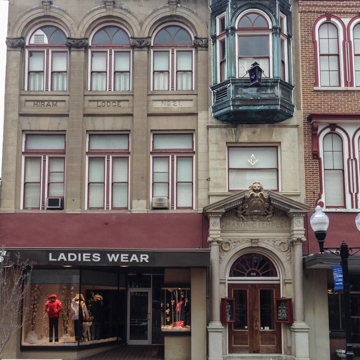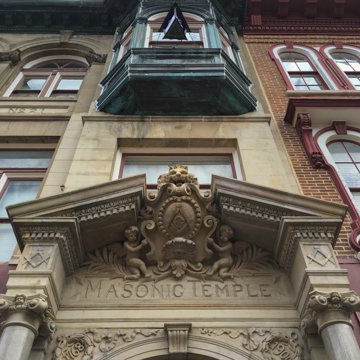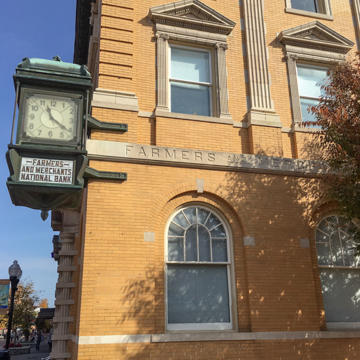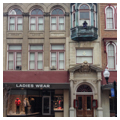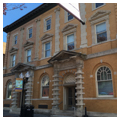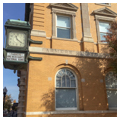Loudoun Street was converted into a tree-lined pedestrian mall in 1974, one of Virginia's first main street pedestrian malls. Among the street's more notable buildings is the Beaux-Arts Classical, yellow brick Farmers and Merchants Bank (1902, Frye and Chesterman; 106 N. Loudoun), which features a parade of fluted Ionic pilasters across the second and third stories separating pedimented and pilastered windows. Round-arched windows on the first floor, impressive quoins, deep eaves, and a pair of elaborate pedimented portals complete the composition. At 118 N. Loudoun the stone-faced three-story Italianate Hiram Masonic Lodge No. 21 (1868; 1901 entrance, Frank H. Jackson) has an elaborate entrance composed of flanking Ionic columns on tall pedestals and a pediment broken at its center by a large cartouche. Above it is a bay window that is clad in copper, as is the roof cornice. The Beaux-Arts Classical Bowman Building (c. 1900; 186 N. Loudoun), originally the Commercial and Savings Bank, is faced with smooth stone and its bays are marked by full-height pilasters. Large round-arched multipaned windows and a recessed entrance flanked by Doric columns in antis further contribute to the building's formality.
You are here
North Loudoun Street
If SAH Archipedia has been useful to you, please consider supporting it.
SAH Archipedia tells the story of the United States through its buildings, landscapes, and cities. This freely available resource empowers the public with authoritative knowledge that deepens their understanding and appreciation of the built environment. But the Society of Architectural Historians, which created SAH Archipedia with University of Virginia Press, needs your support to maintain the high-caliber research, writing, photography, cartography, editing, design, and programming that make SAH Archipedia a trusted online resource available to all who value the history of place, heritage tourism, and learning.

